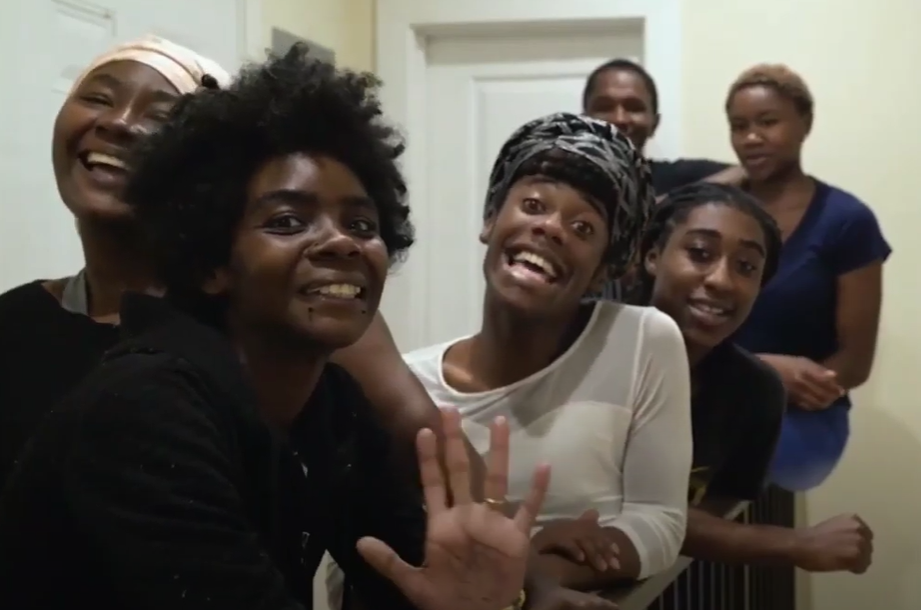SMYAL, short for Supporting and Mentoring Youth Advocates and Leaders, is launching a third Extended Transitional Housing program for LGBTQ youth experiencing homelessness that will provide residents with up to six years of shelter, mental health support and employment assistance.
The two existing sites offer case management support and shelter for up to two years. The new site will provide longer-term care for LGBTQ youth ages 18 to 24 who need more time to address individual needs in a trauma-informed, identity-affirming space, according to Sultan Shakir, the executive director of SMYAL.
“There’s a really high, uphill climb that so many young people have, even here in the District, to transition from a space of experiencing homelessness to a space of independence,” Shakir said. “That’s really why we’re excited to create this opportunity to allow young people more time to overcome some of those barriers.”
The program will be located at Wayne Place in Southeast D.C. and can support up to 12 people at a time in an apartment-style setup including a shared bathroom, kitchen, and living room. There will be six units in total, with two bedrooms to each unit.
The site will also have case management offices, a common space for residents to build relationships, and a computer lab. The program will provide services in English and Spanish.
Two residents moved in on March 1, said Jorge Membreño, director of youth housing and clinical services. Additional participants will move in through the city’s “coordinated entry” system for matching people to housing opportunities, he said.
“We’re incredibly excited to be offering this service to the most vulnerable youth in the city,” Membreño said. “And we look forward to seeing our housing programs grow and seeing our youth thrive in an environment that’s going to care for them for all of this time, and then going forward.”
Harmony Giovanni, a previous resident of a two-year SMYAL residence, said the long-term program gave her hope and support. Giovanni, 25, sought out SMYAL after her grandmother had to move due to mental health challenges. Giovanni moved into the residence in October 2019 and lived there for 15 months.
The program gave her a “pivot moment” to pursue an independent and healthy future, she said.
“Being able to have a housing program like that where people can actually have some level of security for their life … is a huge, huge, life-changing moment,” Giovanni said.
The six-year time frame of the new program is intended to help those who need more time to process trauma and gain sustainable independence, Membreño said. Tackling trauma is very difficult while you are still experiencing it. Providing a stable shelter with resources can help, he said.
There are many programs for LGBTQ youth, but they often “intentionally or unintentionally don’t support someone’s full self,” Shakir said. This can be seen in not using correct pronouns or microaggressions. SMYAL’s creation of these housing spaces is working against that reality.
“Having a place where the person can walk in from day one, and have a community that gets them and understands them, and doesn’t require them to explain themselves is really helpful and affirming to young people,” Shakir said.
Giovanni said SMYAL succeeded in this effort and provided her with a supportive, safe environment with room to grow personally and professionally.
“I think they are doing phenomenal philanthropy work at-large,” she said. “There’s so many things that other organizations that want to learn how to help people stabilize themselves and recover from trauma can learn from them.”
These programs are created as a disproportionate amount of youth experiencing homelessness identify as LGBTQ. Locally, nearly 40% of youth experiencing homelessness are LGBTQ according to the most recent count.
[Read more: At SMYAL’s Youth House, LGBTQ+ youth are provided with housing and affirmation]
Nationally, between 20% and 45% of homeless youth identify as LGBTQ, according to a 2020 report by the UCLA Williams Institute of Law. This is a result of stigma, discrimination, and limited state and federal protections for the LGBTQ population, according to the study.
In a 2019 study, The Trevor Project found LGBTQ youth experiencing housing instability consider suicide at twice the rate of those not experiencing housing instability. In addition, attempted suicide was at more than three times the rate of LGBTQ youth in stable housing, the study found.
The D.C. Office of Human Rights found 48% of employers appeared to prefer at least one less-qualified applicant perceived as cisgender over a more-qualified applicant perceived as transgender in a 2015 study on hiring discrimination. Discrimination in employment, which leads to housing insecurity, is a prevalent problem in the District, Shakir said.
“In really progressive jurisdiction like D.C. that has an incredibly high rate of LGBTQ people in the area, there’s still an unacceptable amount of discrimination against the young people that we work with,” Shakir said.
[Read more: Transgender job applicants face discrimination in the District]
The increasingly expensive housing market contributes to housing insecurity in the District, Membreño said. LGBTQ youth specifically often lose housing because of relatives’ lack of acceptance, too.
“Housing, in any capacity, is a life-saving intervention,” he said. “The right to have housing cuts across every identity, but it’s especially important for LGBTQ youth, even more so LGBTQ [youth] of color.”
Other organizations in the area are providing similar long-term shelter and care. The Wanda Alston Foundation provides 18-month and 6-year program options for LGBTQ youth who’ve experienced homelessness and housing instability.
SMYAL also offers programming and training, which is currently virtual, on a multitude of topics like LGBTQ inclusive sexual health, gender expression, and diet culture. Identity-centered chat rooms and community spaces are also offered. There are about 14 programs offered weekly on average.
“We work with some really amazing and hardworking queer and trans youth who have so many barriers ahead of them,” Shakir said. “Having more support will only help them become more successful.”








